Determination of an Energy Source Term for Fractional Diffusion Equation
Abstract
In this article, we will determine the source term of the fractional diffusion equation (FDE). Our contribution to this work is the generalization of the common inverse diffusion equation issues and the inverse diffusion equation problems for fractional diffusion equations with energy source and using Caputo fractional derivatives in time and space. The problem is reformulated in a least-squares framework, which leads to a nonconvex minimization problem, which is solved using a Tikhonov regularization. By considering the direct problem with an implicit finite difference scheme (IFDS), the numerical inversions are performed for the source term in several approximate spaces. The inversion algorithm (IA) uniqueness is obtained. Furthermore, the effect of fractional order and regularization parameter on the inversion algorithm is carried out and shows that the inversion algorithm is effective. The order of fractional derivatives expresses the global property of the direct problem and also shows the badly posed nature of the inverted problem in question.
1. Introduction
There is some theoretical and numerical research on the direct problem for the FDE with initial and boundary conditions. For the theoretical study, Gorenflo et al. in [10] treat the solvability of linear fractional differential equations. Metzler et al. in [11] consider value problems for fractional diffusion equations. Numerical approaches are proposed by Meerschaert and Tadjeran in [12] and Liu et al. in [13]. However, inverse problems governed by the fractional equation get less attention in the literature. According to Podlubnv [14], let us consider an inverse recovery boundary function problem from a data set at an internal point of a semi-infinite one-dimensional temporal fractional equation. A stable algorithm established and analyzed by modification methods. Cheng et al. [15] have investigated the inverse problem of finding the fractional order and the space-dependent diffusion coefficient in equation (1). By additional boundary data, they prove the uniqueness of the inverse problem in the case of null Neumann boundary conditions. Recently, much research has focused on the theory and applications of inverse problems. Li et al. in [16] treat numerical inversions in a fractional equation. Zhang and Xu in [17] consider an inverse problem for a fractional equation. Li et al. in [18] study the stability of the inverse acoustic problem. Jiang et al. in [19] use an inverse source problem with a hyperbolic equation. Maisto et al. in [20] propose resolution limits for strip currents. Can et al. in [21] treat the inverse problem with Mittag-Leffler. Liu et al. in [22] propose a method for solving a nonlinear wave inverse energy problem. Smirnov et al. in [23] consider an inverse problem for the radiative transfer equation. Slodicka et al. in [24] study the uniqueness for an inverse source problem of determining a space dependent source in a time-fractional equation. Le et al. in [25] solve numerically an inverse problem for hyperbolic equations. Bao et al. in [26] study stability for inverse problems in elastic and electromagnetic waves. Sun and Liu in [27] consider an inverse problem for distributed order time-fractional equations. Yang et al. in [28] propose an iterative method for solving the inverse problem of the time-fractional wave equation. Qiu et al. in [29] give a novel homogenization function method for an inverse problem. Cheng and Liu in [30] study a source problem with local measurements. Hrizi et al. in [31] give a new method for a parabolic inverse problem. Tuan et al. in [32] study an identification of inverse source for fractional equation.
Our primary contribution to this work is the generalization of the common inverse diffusion equation issues and the inverse diffusion equation problems for fractional diffusion equations with energy source and using the Caputo fractional derivatives in time and space. In recent years, a great deal of work has been done to examine these mathematical problems, both theoretically and numerically. These mathematical problems have become a significant tool in simulating many real-life difficulties. For recent developments, one can see Hendy, and Bockstal in [33] for reconstruction of a solely time-dependent source in a time-fractional equation. Ansari et al. in [34] study a class of distributed order fractional diffusion equation. Jajarmi et al. in [7] propose a general fractional formulation and tracking control for a tumor. Erturk et al. in [9] use novel fractional-order Lagrangian to describe the motion of beam.
In this paper, we investigated the inverse problem to numerically determine the energy source term for Caputo temporal FDE. In a one-dimensional space, we apply an algorithm based on the least-squares method with Tikhonov regularization. An IFDS is used for the direct problem. Numerical inversions of energy source terms dependent on space are performed in different approximation spaces using numeric inversion. We show the numerical uniqueness of the IA. The inversion results show the effectiveness of the IA for this inverse problem.
In the first part, we consider nonlinear square problem, which are ill-posed and have many solutions and do not give good simulation results. In the second part, we use the Tikhonov regularization, which allows for successful simulations. In Section 2, we provide preliminary results, then study the last square problem, and discuss the existence and uniqueness of the solution to the Tikhonov regularization problem. We examine the solution to the final square problem. Section 3 shows an inversion algorithm that will be tested successfully through three examples of simulations in Section 4.
2. Well-Posedness
where (3) and the initial condition (4) are the Dirichlet-Neumann boundary conditions, r(x, t) is the energy perturbation term, and k(x) is the spatial diffusion coefficient. The fractional diffusion problem (2)-(4) is a mathematical model to describe the phenomenon of contaminant flux in a medium heterogeneous porous, see Zhou and Selim in [5] and Xiong et al. in [6].
Theorem 1. Let 1/2 < γ < 1, and Ω = (0, l). If r ∈ L2((0, T); Ω), then, for any u0 ∈ L2(Ω), the problem (2) has a unique solution u ∈ L2((0, T); Ω). Moreover
Now, we consider r(x, t) = D(x)f(t).In the case where the sourceD(x)is not defined, we look for it by additional observations at the right end ofx = l, we search for it by additional observationsx = l, i.e., it is a limit.
So, the energy problem is defined by the FDE (3), with the condition defined by (3) - (5) and an additional condition (7).
To find the solution of the energy problem, the function D must be parameterized in the following polynomial form. For x ∈ Ω, we define the family of functions {pm(x): m = 1, 2, ⋯}, with the following approximate expansion:
For any D(x), a unique solution of a corresponding direct problem, indicated by u(x, t; D), can be developed using the finite difference scheme in [16], then u(l, t; D) is obtained. Therefore, getting a term source D amounts to finding a vector , which means that one can write u(l, t; D) = u(l, t; P).
2.1. Nonlinear Least Squares Problem
The problem (9) is badly posed so that this problem admits several solutions. For uniqueness, we used Tikhonov’s regularization.
2.2. Tikhonov Regularization
In the following, to make writing easier, Pj and δPj are abbreviated as P and δP, respectively.
2.3. Linear Problem
Lemma 2. The δPα is a minimum of Fα, if and only if δPα solves the following normal equation
Proof.
For all δP, δPα ∈ ℝm+1. If δPα satisfies (27), then, Fα(δP) − Fα(δPα) ≥ 0, thus, δPα minimizes (28). On the other hand, if δPα minimizes (27), choose δP = δPα + tZ, for all t > 0, and Z ∈ ℝm+1, we have
Hence
Divide by t > 0, and when t⟶0, we get
If we choose Z = −(HT(HδPα − (Ψ − U)) + αδPα), we get
2.4. Existence Result
Theorem 3. There exists at least δPα ∈ ℝm+1, minimum point of the function Fα.
Proof. Let (δPn) ∈ ℝm+1 be a minimizing sequence, i.e.,
However, we have
Therefore, we may write
On the other hand, we have
By replacing (39) in (40), we get
By taking the limit as n and m to infinity, we get Fα(δPn) + Fα(δPm)⟶2I, thus
This shows that (δPn) is a Cauchy sequence and therefore convergent since the Euclidean space is a Hilbert space. Let δPα = limn⟶∞δPn, we have δPα ∈ ℝm+1, by taking into account that Fα is continuous, we conclude that Fα(δPn)⟶Fα(δPα), then, δPα = I. That proves the existence of a minimum of Fα.
2.5. Uniqueness Result
Lemma 4. Fα admits a unique minimum δPα ∈ ℝm+1. This minimum δPα is the unique solution of the normal equation
Proof. The question is to prove the uniqueness of the solution for the normal equation, because we have an equivalence between (27) and (28). We observe that the normal will be written as
In order to show that this equation admits a unique solution, we must prove that the matrix αI + HTH is positive definite. Indeed, ∀δP ≠ 0,
Hence
This proves that the matrix is positive definite, and so invertible, we deduce that equation (28) admits a unique solution, and therefore, Fα admits a unique minimum. Thus, a perturbation can be determined by (28)
Therefore, the solution can be characterized by (12) with a sufficiently large iteration numbers, or when the perturbation verified the convergence condition
3. Inversion Algorithm
Step 1. Given the initial iteration P, the digital differential step τ, and the convergence precision ε, it is the additional condition ψ(t).
Step 2. Solve the direct problem using an implicit finite difference scheme featured in [16], get u(l, tn; P), and u(l, tn; (p0, ⋯, pi + τ, ⋯, pm)), for n = 1, 2, ⋯, and i = 0, 1, ⋯, m, then obtain the vector U, and the matrix H, by the formula (25).
Step 3. Choose an appropriate regularization parameter α ≥ 0, and obtain a perturbation vector δPα, using formula (47), then obtain δDα.
Step 4. If there is , then the IA is finished, and D + δDα is considered the solution we just want to determine; otherwise, go to Step 2, replacing P with P + δP.
4. Numerical Simulations
In this section, we get T = 1, l = 1, the initial condition u0(x) = x, the number of spatial grids M = 20, and the number of time grids N = 20, and we propose the following two examples of simulations.
4.1. The First Case
For example, we choose D(x) = 2 + x, 0 ≤ x ≤ 1, as the exact source term. We performed the IA using the formula (47). By taking the initial data P0 = (0,0.65), the digital differential step τ = 0.4, in the first case, we will do the simulation without the regularization term i.e., α = 0, the computational results are listed in Table 1, where denotes fractional order, Dinv denotes inversion.
| γ | Dinv | Err |
|---|---|---|
| 0.55 | (1.00000, 1.00000) | 1.2972e − 7 |
| 0.6 | (1.00000, 1.00000) | 1.292844e − 7 |
| 0.65 | (1.00000, 1.00000) | 5.54255e − 8 |
| 0.7 | (1.00000, 1.00000) | 6.28358e − 5 |
Where Err given by Err=‖Dtrue − Dinv‖ defines the absolute error in the solutions. The source term and their inversion are shown in Figure 1.
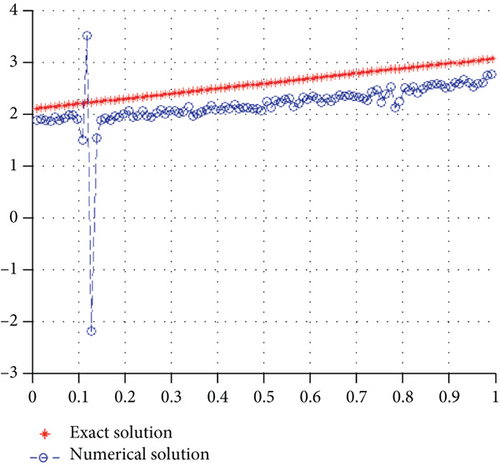
Figure 2 gives the graph of the error during iterations. Now, we put α = 1e−6, and thus, we get Figure 3.
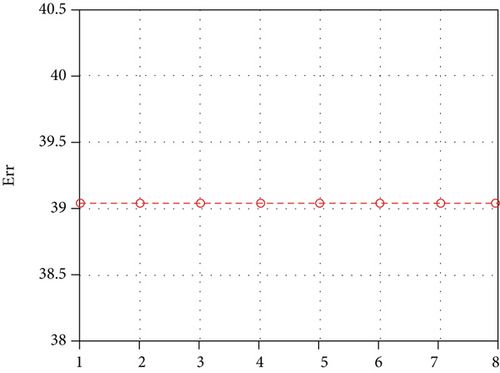
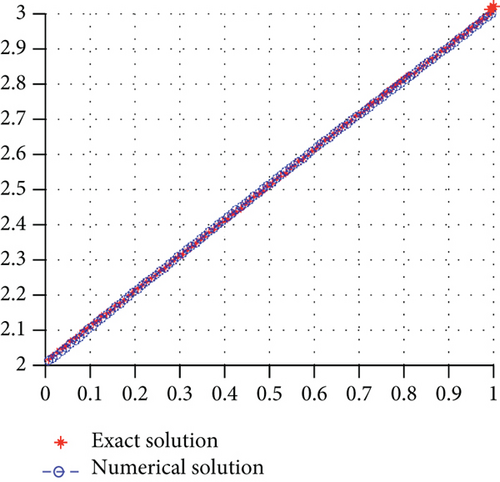
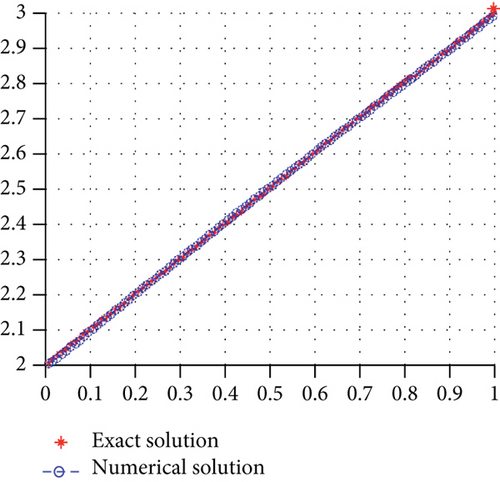
Figure 4 gives the graph of the error during iterations.
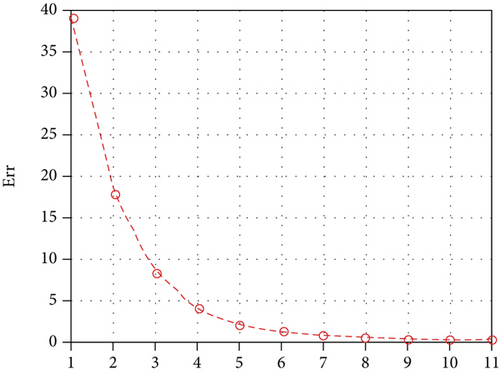
4.2. The Second Case
| γ | Dinv | Err |
|---|---|---|
| 0.55 | (1.00000, 1.00000, −3.874254e − 9) | 5.874788e − 7 |
| 0.6 | (1.00000, 1.00000, −5.875477e − 9) | 1.02157e − 9 |
| 0.65 | (1.00000, 1.00000, −7.700214e − 8) | 5.14785e − 8 |
| 0.7 | (1.00000, 1.00000, −6.375155e − 6) | 1.008547e − 5 |
Figure 4 gives the graph of the error during iterations.
The source term and their inversion are shown in Figures 5(a) and 5(b).
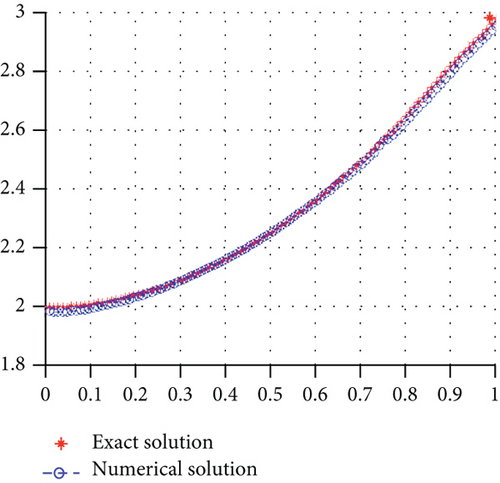
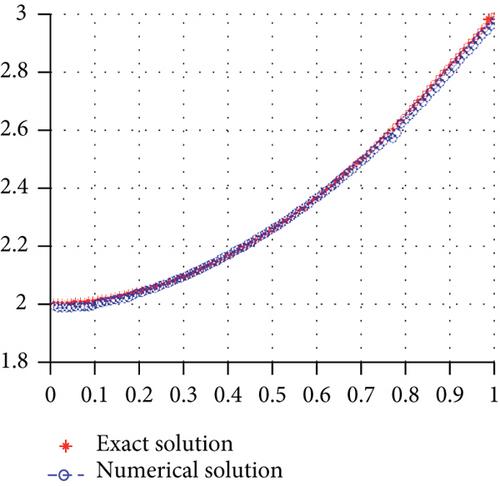
4.3. The Third Case
Table 3 shows that the fractional order has a significant effect on the problem and the resulting algorithm. Solution errors reach their minimum in optimal regularization of parameters which correspond to each fractional order while regulating solutions. The regularization parameter is larger when the fractional order is approaching 1. The true source term and the inversion solution are presented by the Figures 6(a) and 6(b).
| γ | α | Dinv | Err |
|---|---|---|---|
| 0.55 | 3.212157e − 9 | (1.00000, 1.00000, 1.50000) | 1.20025e − 7 |
| 0.6 | 6.4757e − 10 | (1.00000, 1.00000, 1.50000) | 12.30215e − 7 |
| 0.65 | 7.0002e − 8 | (1.00000, 1.00000, 1.50000) | 1.385470e − 6 |
| 0.7 | 6.15477e − 11 | (1.00000, 1.00000, 1.50000) | 8.00145e − 9 |
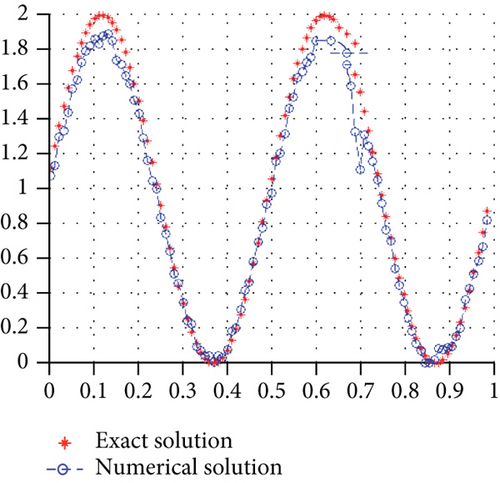
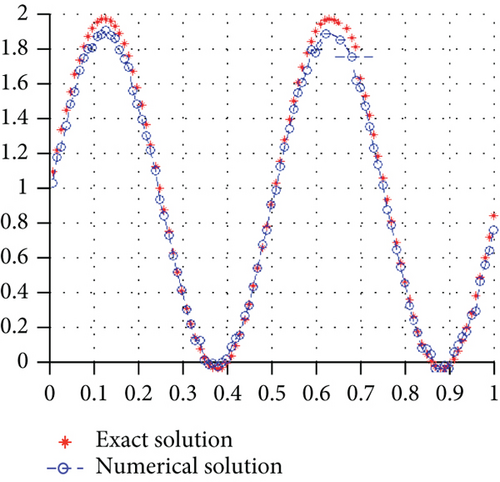
The simulation is concerned by proposing a numerical solution of a one-dimensional fractional system with Caputo derivative. We use an extension of the well-known in literature by inverse problem method. The comparison between the exact solution and the numerical one of the considered system show the effectiveness of our proposed algorithm. The three cases that have been suggested demonstrate the veracity of our findings.
5. Conclusion
Inverse source problem for one dimensional time-space fractional diffusion equations (FDE) are considered. We use numerical approach determine the source term for a Caputo temporal. According to Hadamard sense, these inverse problem is ill-posed. In order to recreate a stable solution for the inverse issue, a new fractional Tikhonov regularization technique is applied. We conclude that the regularization coefficient and digital differential step show major effects on the algorithm, but for the first iteration with convergent precision, the influence on the algorithm is less. It also results from the conclusion that the first iteration with convergent precision has a small effect on the algorithm. Further research in the future can envisaged, and we cite the extension of the proposed method to higher dimensional space, also its application to solve optimal control problems governed by FDE.
Conflicts of Interest
The authors declare that they have no competing interests.
Acknowledgments
This work was funded by the Deanship of Scientific Research at Jouf University under grant no. (DSR-2021-03-0342).
Open Research
Data Availability
Data sharing not applicable to this paper as no data sets were generated or analyzed during the current study.




